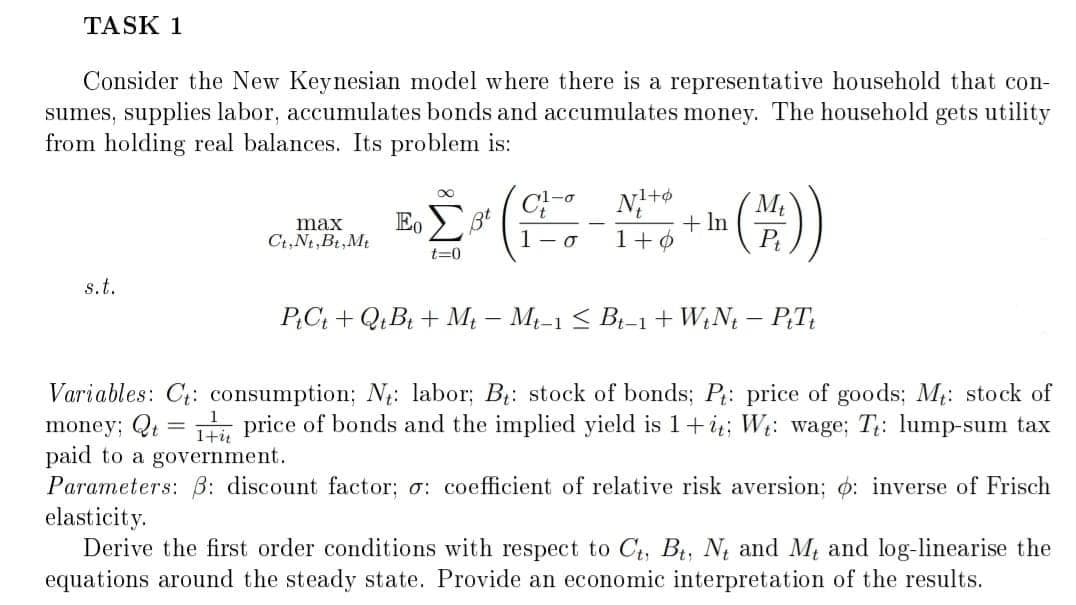Consider the New Keynesian model where there is a representative household that con- sumes, supplies labor, accumulates bonds and accumulates money. The household gets utility from holding real balances. Its problem is: C 1-0 1+ø Eo + In 1+0 Bt max Ct,Nt,Bt,Mt t=0 s.t. PC; + Q,B + M – M-1 < B-1 + W,N – PT, Variables: Ct: consumption; N: labor; B: stock of bonds; P: price of goods; M: stock of 1 price of bonds and the implied vield is 1+i: W.: wage: T: lump-sum tax money: O.
Consider the New Keynesian model where there is a representative household that con- sumes, supplies labor, accumulates bonds and accumulates money. The household gets utility from holding real balances. Its problem is: C 1-0 1+ø Eo + In 1+0 Bt max Ct,Nt,Bt,Mt t=0 s.t. PC; + Q,B + M – M-1 < B-1 + W,N – PT, Variables: Ct: consumption; N: labor; B: stock of bonds; P: price of goods; M: stock of 1 price of bonds and the implied vield is 1+i: W.: wage: T: lump-sum tax money: O.
Chapter13: Monetary Policy: Conventional And Unconventional
Section: Chapter Questions
Problem 8TY
Related questions
Question

Transcribed Image Text:TASK 1
Consider the New Keynesian model where there is a representative household that con-
sumes, supplies labor, accumulates bonds and accumulates money. The household gets utility
from holding real balances. Its problem is:
1-o
1+4
E,
+ In
P
1+0
max
3t
Ct,Nt,Bt,Mt
t=0
s.t.
PC; + Q;B + M – M-1 < B-1+ W;N – PT;
Variables: C: consumption; N: labor; B: stock of bonds; P: price of goods; M: stock of
money; Qt = , price of bonds and the implied yield is 1+i;; Wt: wage; T;: lump-sum tax
paid to a government.
Parameters: B: discount factor; o: coefficient of relative risk aversion; o: inverse of Frisch
elasticity.
Derive the first order conditions with respect to C, B, N and M and log-linearise the
equations around the steady state. Provide an economic interpretation of the results.
1+i
Expert Solution
This question has been solved!
Explore an expertly crafted, step-by-step solution for a thorough understanding of key concepts.
Step by step
Solved in 2 steps

Knowledge Booster
Learn more about
Need a deep-dive on the concept behind this application? Look no further. Learn more about this topic, economics and related others by exploring similar questions and additional content below.Recommended textbooks for you


Brief Principles of Macroeconomics (MindTap Cours…
Economics
ISBN:
9781337091985
Author:
N. Gregory Mankiw
Publisher:
Cengage Learning


Brief Principles of Macroeconomics (MindTap Cours…
Economics
ISBN:
9781337091985
Author:
N. Gregory Mankiw
Publisher:
Cengage Learning